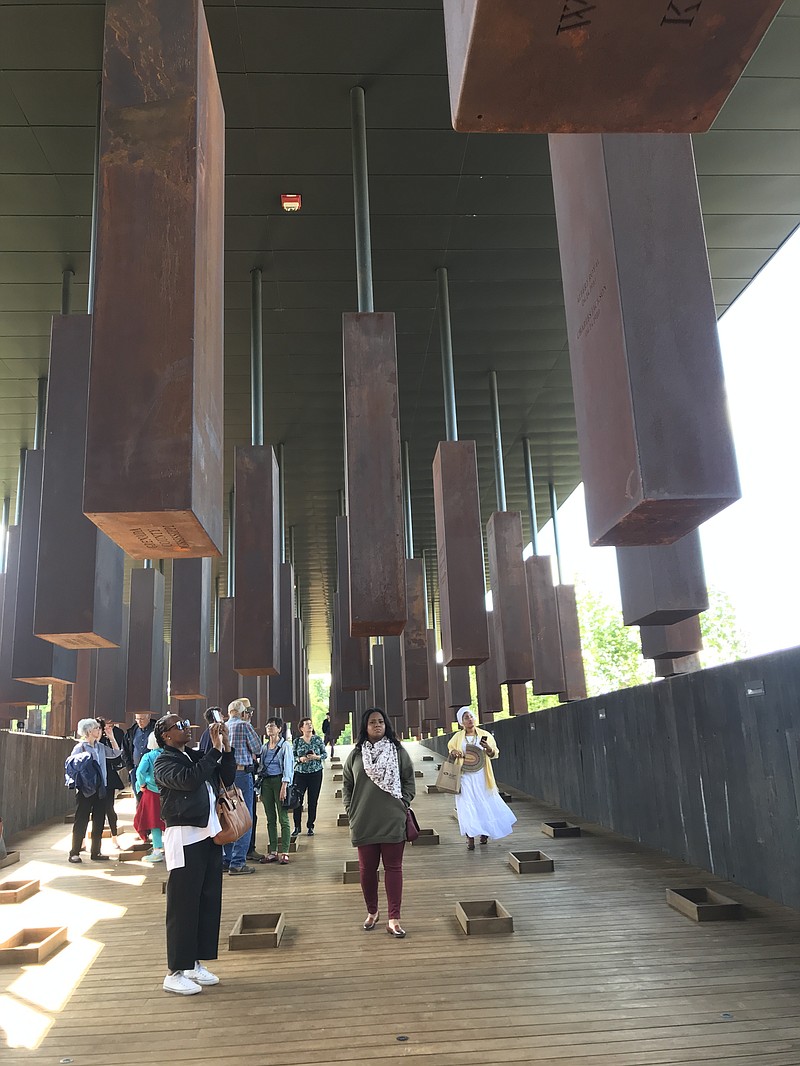MONTGOMERY, Ala. - Since the Equal Justice Initiative (eji.org) opened the National Memorial for Peace and Justice here in April, it has attracted visitors with a simple yet powerful commemoration of a horrific era in the South: the lynching of some 4,000 African-American men, women and children between 1877 and 1950.
It took years of research for the Equal Justice Initiative to document not only the states and counties where the lynchings occurred but also to identify the victims by name. Some of that effort was unsuccessful, leading researchers to conclude that the names of thousands more victims are lost to history.
But maybe not all of them, as it remains a work in progress. An Initiative brochure says "the park holds a field of identical monuments that are waiting to be claimed and installed in the counties they represent [and] show the parts of the country that have confronted the truth of their history and the counties that have yet to do so."
The National Memorial's message begins with powerful sculptures and wall statements intended to prepare visitors for the history they will encounter: a decades-long campaign of domestic terrorism.
A brochure states the inscriptions depict "the story of racial terror, lynching's historical roots and its links to slavery." But more pertinent to us today is the rest of the quotation: " and the extent to which this historical period permanently shaped the demographic of America."
Built on a six-acre site, the memorial is a large square structure with a gravel floor that causes visitors' footsteps to produce a quiet scuffling sound. There are no walls or windows, just an open expanse that is nevertheless inviting despite the evil manifested by the identification of so many victims.
Think of it as an open air cathedral.
The walk up to the structure is helpful because immediately upon entering, you are confronted by the first of 800 long rectangular steel monuments suspended from the ceiling. They are etched with the states and counties where each "sentence" occurred, and below that information the victims' names and the year they died.
The counties are too numerous to list here but among them are Catoosa and Chattooga counties in Georgia; Rutherford and Bledsoe counties in Tennessee - and Hamilton County, where Ed Johnson was lynched in 1912 at one end of Chattanooga's Walnut Street Bridge. Also included: Guilford County in North Carolina, the home of Greensboro, where I was raised.
The temperature was in the high 90s the afternoon I walked through the memorial. But any discomfort was soon replaced by an unsuccessful effort to comprehend the enormity of what the memorial presents. Perhaps it is best conveyed by Hannah Arendt's book on the trial of a Nazi war criminal in which she coined the phrase, "the banality of evil."
At the outset of the memorial, the monuments' inscriptions are at eye-level. But as you walk further into the memorial, making one of three right turns, something remarkable occurs.
The monuments rise toward the ceiling as the floor slopes steadily downward, so that by the time you reach the exit, the monuments hang far above you. You can no longer read the etched information on them. But the mute testimony of long-dead victims remains.
Signs along the outside walkway accurately describe the memorial as "sacred." It is not unlike the emotional impact one experiences when visiting the Holocaust museum and the Vietnam memorial in Washington, or any of the national cemeteries where thousands of military veterans are interred.
The brochure aptly references that fact, stating that the National Memorial "is a reckoning that acknowledges Dr. Martin Luther King Jr.'s powerful insight: "True peace is not just the absence of tension, but the presence of justice."
Michael Loftin is a former opinion page editor of The Chattanooga Times.
